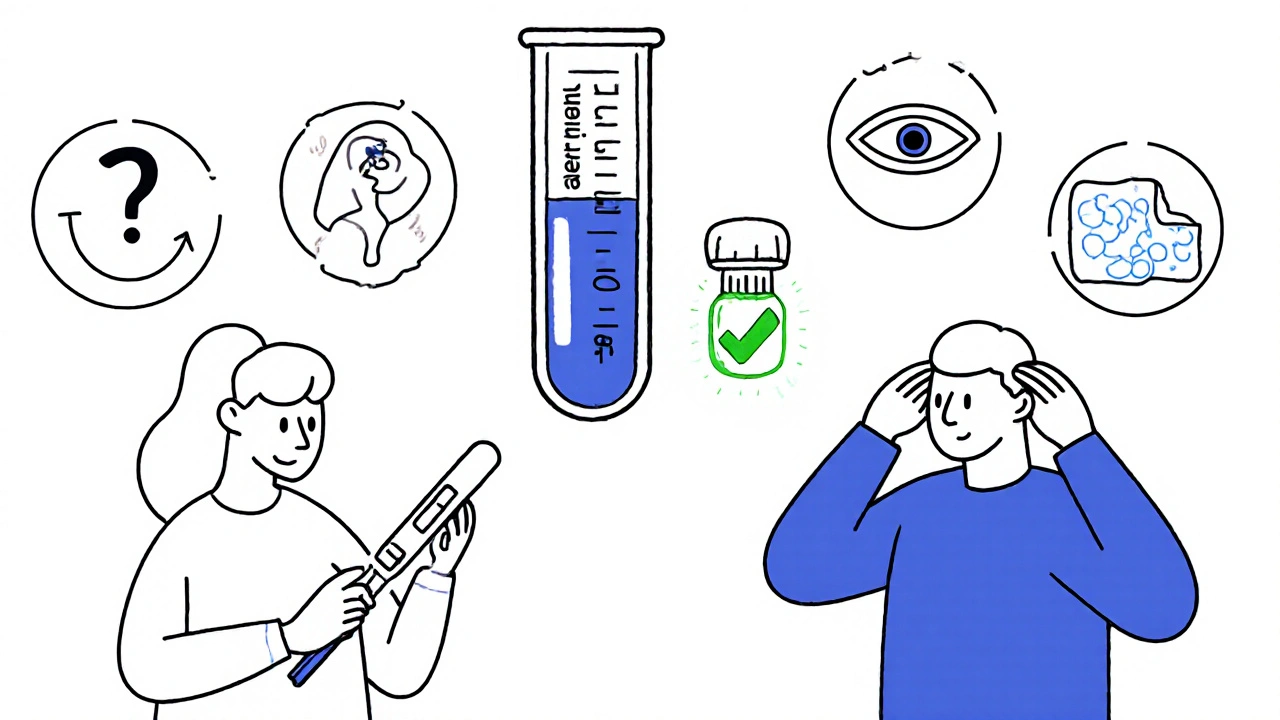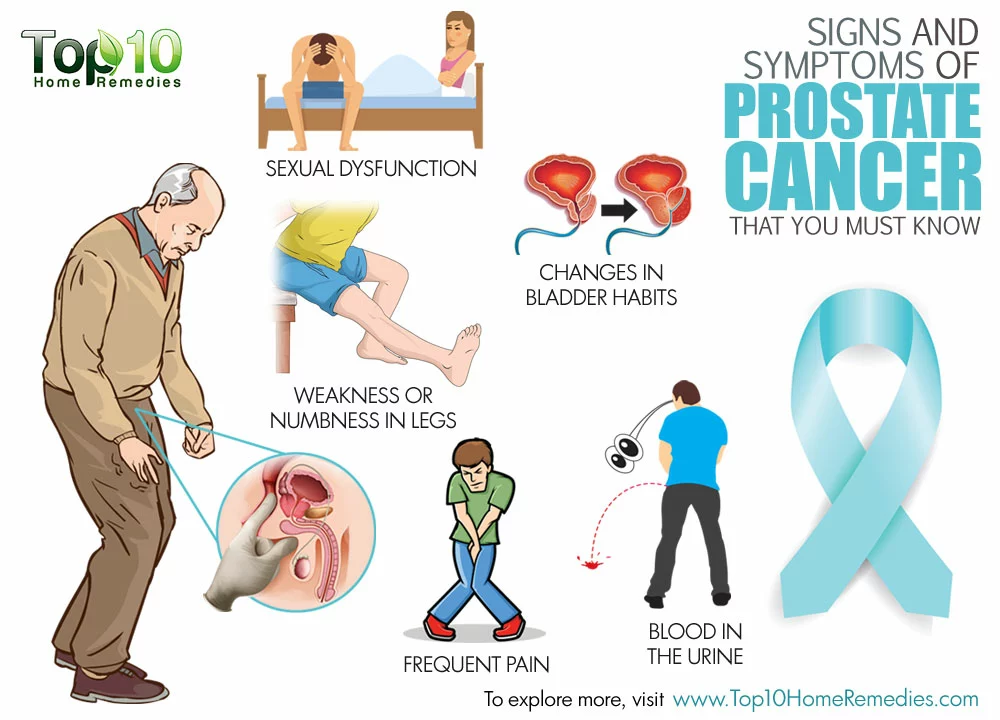What Exactly Is a Prolactinoma?
A prolactinoma is a benign tumor in the pituitary gland that makes too much prolactin - a hormone that normally triggers milk production after childbirth. But when it’s overproduced in someone who isn’t pregnant or nursing, it throws off the whole hormonal system. These tumors are the most common type of pituitary adenoma, making up 40% to 60% of all cases. Most are small - under 1 centimeter - and don’t cause symptoms. But when they grow, they can mess with fertility, sex drive, and even vision.
Here’s the thing: a prolactin level above 150 ng/mL is almost always a prolactinoma. Levels over 200 ng/mL usually mean it’s a larger tumor, called a macroprolactinoma. Many people never know they have one until they see a doctor for missed periods, trouble getting pregnant, or unexplained milk production. Men often notice low libido, erectile dysfunction, or fatigue. It’s not rare - about 1 in 10 people have a pituitary tumor, but only a fraction ever get diagnosed.
How Prolactin Disrupts Your Body
Prolactin doesn’t work alone. It shuts down the hormones that control your menstrual cycle and testosterone production. In women, high prolactin causes amenorrhea - no periods - and galactorrhea, which is milk leaking from the breasts even without pregnancy. Up to 95% of women with prolactinomas have one or both of these symptoms. Fertility drops because ovulation stops. Some women think they’re entering early menopause, but it’s just the tumor.
In men, the signs are quieter but just as real. Eighty percent report sexual problems - low desire, trouble maintaining erections, or reduced sperm count. Some lose body hair or notice breast tenderness. Because these symptoms are often blamed on stress or aging, many men go years without testing. The result? A tumor that grows slowly, silently pressing on nerves and affecting vision.
It’s not just about reproduction. High prolactin can lower bone density over time, increasing fracture risk. It can also cause mood swings, headaches, and fatigue that feel like depression. That’s why getting tested matters - treating the tumor often fixes these other problems too.
How Doctors Diagnose It
Diagnosis starts with a blood test. If your prolactin is sky-high - say, over 200 ng/mL - your doctor will order an MRI of your pituitary. Not just any MRI, though. It needs to be done with 3mm slices to catch small tumors. A standard brain MRI won’t cut it. They’ll also check your vision with a visual field test, especially if the tumor is over 1 cm. That’s because large tumors can press on the optic nerve, causing blind spots in your peripheral vision.
Doctors rule out other causes first. Pregnancy, certain antidepressants, kidney failure, and even chest wall injuries can raise prolactin. If none of those apply and your levels stay high, it’s almost certainly a prolactinoma. No biopsy is needed - the MRI and hormone levels are enough.
One red flag: if your prolactin is above 5,000 ng/mL, it’s almost always a large, aggressive tumor. One case from Mayo Clinic involved a 34-year-old woman with a prolactin level of 5,200 ng/mL. After six months of treatment, it dropped to 18. That’s the kind of dramatic turnaround possible - but only if you catch it early.

First-Line Treatment: Dopamine Agonists
Here’s the good news: for most people, medication works better than surgery. Dopamine agonists like cabergoline and bromocriptine trick the brain into thinking there’s enough prolactin, so the tumor stops making it. Cabergoline is now the gold standard. It’s taken just twice a week, works longer, and causes fewer side effects than bromocriptine, which needs daily doses.
Studies show cabergoline normalizes prolactin in 80-90% of small tumors and 70% of large ones within three months. Tumor shrinkage happens in 85% of cases. Many patients feel better in just a few weeks - periods return, milk stops, energy improves. One patient on Reddit shared that after four weeks on cabergoline, she got her period back for the first time in two years.
Side effects? Nausea and dizziness are common at first, but most people adjust. Only about 18% stop cabergoline because of them - compared to 32% who quit bromocriptine. Starting low (0.25 mg twice a week) and slowly increasing helps avoid this. Your doctor will check prolactin every month until it’s normal, then every three months after that.
Surgery: When Medication Isn’t Enough
Surgery isn’t the first choice - but it’s critical when medication fails or vision is at risk. The standard procedure is transsphenoidal surgery: a tiny cut inside the nose or under the upper lip, no external scars. Endoscopic tools give surgeons a clear view, and success rates are high for small tumors - 85-90% of microadenomas are fully removed.
But for larger tumors (over 1 cm), success drops to 50-60%. If the tumor has grown into the cavernous sinus around the brain, cure rates fall to 35%. That’s why doctors prefer to shrink big tumors with cabergoline first. If it shrinks enough, surgery becomes safer and more effective.
Immediate risks include CSF leaks (2-5%), temporary diabetes insipidus (5-10%), and rare pituitary apoplexy (1-2%). Most people go home in 3-5 days. But recovery isn’t just physical - hormone levels can drop too low after surgery, requiring lifelong replacement therapy for cortisol, thyroid, or sex hormones.
Radiation: The Slow Option
Radiation is usually saved for tumors that don’t respond to meds or surgery. Options include Gamma Knife (single high-dose radiation), conventional fractionated radiation (over weeks), and proton therapy. Gamma Knife is preferred - it targets the tumor precisely, with only 1-2% risk of optic nerve damage versus 5-10% with older methods.
But here’s the catch: radiation doesn’t work fast. It can take two to five years for prolactin levels to normalize. During that time, you still need medication. And 30-50% of patients end up with hypopituitarism - meaning their pituitary stops making other hormones entirely. That means lifelong hormone pills.
Still, for patients who can’t take dopamine agonists or have recurring tumors, radiation offers long-term control. One study showed 95% of tumors stayed under control five years after Gamma Knife treatment.
Long-Term Management and Risks
Even if your prolactin is normal and the tumor shrinks, you’re not done. Most people need to stay on medication for years - 70% take it for life. Stopping too soon causes prolactin to spike again within 72 hours. That’s why skipping doses isn’t an option.
Cabergoline is safe for most, but long-term use (over 2.5 mg per week for more than three years) carries a small risk of heart valve problems. That’s why the European Society of Endocrinology recommends an echocardiogram every two years if you’re on high doses. The FDA has a black box warning for this, but the risk is low for most patients on standard doses.
Regular follow-ups are non-negotiable. You’ll need MRI scans every 1-2 years and blood tests annually. If you’re on medication, your doctor will watch for side effects. If you’ve had surgery, they’ll monitor for hormone deficiencies. Missing checkups can mean a tumor comes back - unnoticed.
What’s Next? New Treatments on the Horizon
The field is moving fast. In 2023, the FDA approved paltusotine for acromegaly - a different pituitary disorder - and trials are now testing it for prolactinomas. Early results show promise in lowering prolactin without the side effects of dopamine agonists.
Researchers are also looking at gene mutations like GNAS and USP8 to predict which tumors will grow or resist treatment. In five years, doctors may use a blood test to match each patient with the best therapy - personalized medicine.
Even more exciting: CRISPR-based therapies targeting MEN1 gene mutations and dopamine-eluting stents that deliver drugs directly to the tumor. These are still years away, but they’re real possibilities.
For now, the message is simple: if you have unexplained infertility, missed periods, low sex drive, or milk production outside of nursing - get tested. A simple blood test and MRI can change your life. Most prolactinomas are treatable. Many are curable. And with the right care, you can get back to feeling like yourself again.
Can a prolactinoma cause infertility?
Yes. High prolactin levels suppress the hormones needed for ovulation in women and sperm production in men. In women, this often means missed periods and inability to conceive. In men, it leads to low sperm count and erectile dysfunction. Treating the tumor with dopamine agonists usually restores fertility within months.
Is cabergoline safe for long-term use?
For most people, yes. Cabergoline is well-tolerated at standard doses (0.5-1 mg twice weekly). But long-term use above 2.5 mg per week for more than three years may increase the risk of heart valve issues. Doctors recommend an echocardiogram every two years if you’re on higher doses. The benefits usually outweigh the risks, especially since untreated prolactinomas can cause serious complications.
Do all prolactinomas need surgery?
No. Surgery is only needed if medication doesn’t work, the tumor is causing vision loss, or you can’t tolerate the drugs. Most small tumors shrink or stabilize with cabergoline. Even many large tumors respond well to medication first. Surgery is reserved for specific cases - not the default.
Can a prolactinoma come back after treatment?
Yes, especially with larger tumors. After surgery, recurrence rates are 5% for small tumors but 25-30% for large ones. Even after successful medication, stopping treatment too soon causes prolactin to rebound. Lifelong monitoring is key. Regular blood tests and MRIs help catch any regrowth early.
What happens if I miss a dose of cabergoline?
Missing even one dose can cause prolactin to rise within 72 hours. This can bring back symptoms like milk production, irregular periods, or low libido. It doesn’t mean you’ve failed - just that consistency matters. If you miss a dose, take it as soon as you remember, but don’t double up. Talk to your doctor if you’re having trouble sticking to the schedule.
Can men get prolactinomas too?
Absolutely. While women are diagnosed more often - often because of missed periods or milk production - men get prolactinomas too. Their symptoms are different: low sex drive, erectile dysfunction, fatigue, and sometimes breast tenderness. Because these are often mistaken for aging or stress, men may go years without diagnosis. Testing prolactin levels is just as important for men as it is for women.









15 Comments